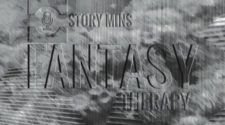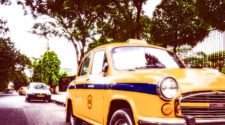Recently I had this amazing opportunity of visiting one of the most enchanting places of our country. Varanasi!
Varanasi is said to be India’s oldest city located along the banks of River Ganges, in the state of Uttar Pradesh, in North India. It is known as the Holy-City with lots of beautiful temples and Ghats that have become an integral part of its existence. In total there were four of us travellers – my mother, my uncle, my aunt and of-course “me’.
We boarded the train (Kalka Mail) from Howrah station at 8:00 pm on 26th July 2019. The AC two tier compartment was pretty clean. We spent some quality time in the train gossiping and playing cards. Then we had our dinner and went to sleep. We reached Pandit Deen Dayal Upadhyaya Junction (also known as Mughalsarai Junction) the next morning at 6’o clock. From there we took a cab and started our journey towards Varanasi. Varanasi is also known as Kashi (the City of Life) and Benares. The driving distance between Mughalsarai and Varanasi is 26km. We reached our hotel ‘Puja Residency’ within 40 minutes as there was no traffic congestion during the morning hours and checked-in at the hotel. We had booked the rooms beforehand, so we didn’t have to face any trouble. The interior of the room was very beautiful, well decorated, and extremely clean. It seemed as if the hotel-administration had cast a magic spell on their welcome note. We quickly freshened-up, had a lavish breakfast, took an auto and headed towards Kal Bhairav Temple. ‘Kal Bhairav Temple’ is known as the ‘Guardian Temple’ of the city, according to the locals and is one of the oldest Shiva temple of India. Tourists and locals visit the temple immediately after entering the city and prior to exiting it. I found the residents to be extremely kind, warm and welcoming towards visitors.
After worshipping Baba Kal Bhairav, we went to the Assi-Ghat. According to the locals, the birth of the river Assi has a mythological story behind it. It is believed that when Goddess Durga was fighting with the Demons Shumbha-Nishumbha, her sword struck the ground while she destroyed him, resulting in the inception of a stream, known as the river Assi. The Ghat which came to be on the edge of the river, where the River Assi joins River Ganga, was thus named the Assi-Ghat. The weather was hot and humid and we all were feeling tired and hungry. So we went back to our hotel. We had a sumptuous meal in the restaurant of the hotel and the food was finger licking tasty. After having our lunch, we went to our respective rooms to take an afternoon nap. In the evening we went to the Sankat Mochan Temple. It is a famous Hanuman Temple of Varanasi. After worshipping, we drank Lassi from a nearby shop and it was so delicious that it cannot be expressed in words. Thereafter, we came back to our hotel, had our dinner, chitchatted for a while and went to sleep. The next morning we woke up pretty early, had an amazing breakfast buffet in the hotel and started our journey towards Sarnath.
Sarnath is a Buddhist pilgrim spot. It is also a pilgrimage spot for the Jains. This is the place where Lord Buddha preached for the first time after attaining Enlightenment. We got to see numerous sculptures of Buddha there. The Stupa is surrounded by huge lawns and lush green gardens. We also saw the Thai temple situated there. The most predominant attraction of the Sarnath is the Bodhi tree that is present there. This tree was grown from a cut taken from the original Bodhi tree at Bodh Gaya, under which Lord Buddha had attained his Enlightenment. Sarnath is also famous for the Asoka Pillar which is the national emblem of our country. After visiting Sarnath, we headed towards the Ramnagar Fort. The Ramnagar Fort is located near the Ganges on its eastern bank, opposite to the Tulsi Ghat. It was built by Kashi Naresh Raja Balwant Singh and is mostly made up of sandstone. This fort has two beautiful temples, museum within the property and a big lawn in front of the it. We saw gangs of monkeys sitting on the lawn, quite busy having grass for supper or for a change, scratching each other’s back. The museum exhibits a majestic collection of the royal family which compromises of palanquins, vintage cars, chariots, howdahs, ivory work, antique clocks, crockeries, etc. There were numerous swords of different sizes, daggers, old guns, rifles, pistols, bullets and other weapons that the kings used in both hunting and for fighting battles. We saw royal costumes too. But unfortunately we were not allowed to click a single photograph inside the museum. After visiting the Fort, we drank Lassi and munched on some street food. Then we visited Lal Bahadur Shastri’s house in Ramnagar. After that we went to the Banaras Hindu University (BHU). There we saw the New Vishwanath Temple. It is located inside the huge sprawling campus of BHU. We offered prayers to Lord Shiva, came to the canteen, ate Pao Bhaji and came back to the hotel since it had started drizzling all of a sudden. Good for us, because soon it started raining cats and dogs.
Varanasi though not as dirty as Kolkata, is quite congested, crowded and dusty. However, the bothering part had been the constant honking of cars and scooters, that gave me a bad headache (secret: thanks to whoever had innovated the tech for manufacturing the ‘Amritanjan Balm’, I felt relieved after applying the balm and fell asleep).
The next morning we visited the Shri Kashi Vishwanath Temple. It is said to be the oldest Shiva temple of the city. It receives more than a thousand devotees everyday. It was Monday and I think there were more than one lakh people inside the temple. We had to walk for more than 3 kilometers since the police were not allowing any vehicles to go near the temple because of the huge crowd and finally we reached the temple. We somehow managed to catch a glimpse of the idol of Lord Shiva in the massive crowd. After worshipping Lord Shiva, we entered a restaurant situated near the temple. We had our lunch there. They served Chilli Paneer, Crispy Chilli Potato, Fried Rice and Lassi.
Important part: After having lunch, each of us had Banarasi Paan. The song “Khaike paan Benaras wala, Khul jaaye baand akal ka tala” started playing in my mind all of a sudden. After having the paan we headed back to our hotel to take rest. I entered my room and literally crashed on the bed. At 4:30 pm, we woke up, dressed, took an auto and went to the Dashashwamedh Ghat.
Dashashwamedh Ghat is said to be the most famous Ghat of Varanasi. Pilgrims from all over India come to this Ghat as they believe that taking a dip in the holy river water of Ganges will cleanse away the sins of their lifetime (Although I couldn’t believe in the myth, someone could always market the water in form of a detergent). We hired a boat to watch the Aarti ceremony from the river’s perspective and in the process, had to negotiate a lot with the boatman. Sunrise and Sunset are the best times to experience a boat ride and see the beauty of the holy city. However we could only have the opportunity to take a boat-ride during the sunset, all four of us being quite well-known late-risers. After the sunset, the Ganga Aarti Ceremony started. The Aarti is performed by Hindu priests who chant mantras and hymns praising River Ganga and Lord Shiva. Watching the Aarti from the boat is a wonderful experience. All the boats are gathered together near the Ghat, while gently floating on the water, as if butterflies. The Aarti had a sense of calmness around it and it seemed totally opposite to the hustle and bustle of the city. All the people present there were watching the Aarti quietly and peacefully. I clicked as many pictures as I could. While the Aarti was performed, the Ghat reflected it like an oasis of serenity amidst the bustling city. At the end of the Aarti, the priests poured milk and petals of flowers into the river. We came back to our hotel, had our dinner and fell asleep.
The very next day we didn’t go anywhere. We took some rest in the hotel. However, in the evening we visited the Kal Bhairav Temple again since we were to exit the city the very next morning. Then we went to Madanpura to buy some embroidered Banarasi Sarees, and after all of that we went to one of the Cremation Ghats called Harish Chandra Ghat (named after King Harish Chandra). I got to know from a shopkeeper that nearly hundred dead bodies are burnt here everyday at the ghat and then their ashes are immersed into the Ganges. Might as well consider, that there are only two Cremation Ghats in the City – the Manikarnika Ghat and the Harish Chandra Ghat. While returning to our hotel, we stopped our car and had Rabdi from a street vendor. I wish I could pack some of it and get it back to Kolkata.
The next morning we packed our bags and headed for the Varanasi station to head to our next destination – Lucknow, the City of Nawabs. Although the foodie inside me would rather prefer to call it the ‘City of Kebabs’.
Bit of a contrast, probably because variety is the essence of life!
Featured image courtesy: pxhere.com





















